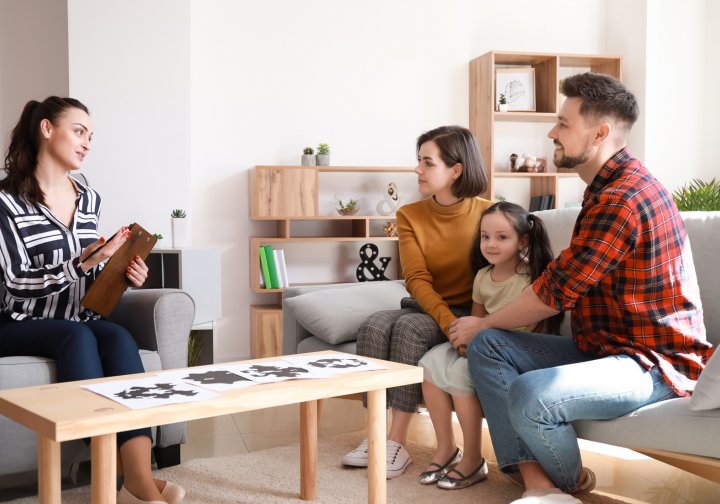Blog

How family therapy works and what to expect from it
Family therapy is a form of psychotherapy to improve communication and relationships between family members. This therapy can help resolve conflicts and strengthen mutual understanding. How exactly does it work, and what can you expect from it?
When is family therapy appropriate?
Family therapy is recommended in situations where there are:
-
frequent conflicts between parents and children,
-
communication problems,
-
psychological problems of one member of the family that affect the others,
-
divorce or other major changes in family dynamics,
-
grief, trauma or loss of a loved one,
-
addictions, eating disorders or other difficult situations.
What does the first session in family therapy look like?
The first meeting with the therapist is usually to get to know and understand the main issue weighing on the family. The therapist listens to all family members and helps identify what is causing tension or difficulty in the relationship.
During the meeting, you can expect questions such as:
-
What are the main issues that brought you to therapy?
-
How do you feel about the relationships in your family?
-
How do you communicate with each other and resolve conflicts?
-
What would you like to improve?
The first meeting is very important in this respect because it helps the therapist to understand the situation and to suggest an appropriate approach to therapy.
Another typical course of family therapy
Family therapy can take different forms, depending on the needs of the family.
Joint sessions - the whole family is present, and the therapist helps with communication and conflict resolution.
Individual sessions - the therapist works with individual family members to understand their
personal feelings and needs.
Combination of both - alternating individual and group sessions according to the needs of the family.
Sessions tend to be specific to each family, and family therapists use different approaches and techniques built specifically around each family's individual needs.
Here are some of the most common methods:
1. Communication techniques
Active Listening - The therapist teaches family members how to listen to each other, not just wait for their moment to respond. It helps to clear up misunderstandings and improve relationships.
I-statements instead of You-statements - Instead of "You never listen to me," they learn phrasing such as "I feel ignored when you don't listen to me." This technique effectively reduces conflict.
Mirroring - Each family member repeats in their own words what they just heard from the other. This helps to understand each other's feelings and needs better.
2. Working with emotions and conflicts
Anger Management Techniques: The family learns how to handle outbursts of anger without yelling or blaming. Examples include breathing exercises or "pause before reacting."
Expressive therapies (e.g. drawing, dramatization) - Especially for children, artistic expression of feelings that are difficult to describe in words is helpful.
Genogram - A family "relationship tree" where the therapist helps to map relationships between family members and identify patterns of behavior or conflict that may repeat across generations.
3. Cognitive-behavioral techniques
Identification of negative thinking patterns: For example, if a child feels "no one likes me," the therapist will help reevaluate this thought pattern and find evidence that shows otherwise.
Practising positive habits - For example, a daily ritual where the family shares the positive things that happened to them during the day in the evening.
4. Role-playing
Role-playing - Family members switch roles (e.g. a child plays the role of a parent and vice versa) to understand how the other party feels in certain situations.
Model situations - The therapist suggests a specific problem, and the family tries to solve it while the therapist is present. Afterwards, the therapist provides feedback.
How long does family therapy last?
The length of family therapy depends on the severity of the problem and the willingness of the members to cooperate. Some families can get by with a few sessions; others need longer-term support.
It is essential to understand that attending family therapy is not a failure or incompetence of either party. It is a process of restoring understanding between like-minded individuals who have unique perspectives on life. Therefore, the benefits of family therapy include improved communication between family members, knowledge of other members, mastery of joint problem-solving techniques, and, as a result, harmonization of relationships and calming of the family atmosphere.
Do you have a family in a difficult situation, and no one seems to get along anymore? Our professional family therapists are at your disposal.
